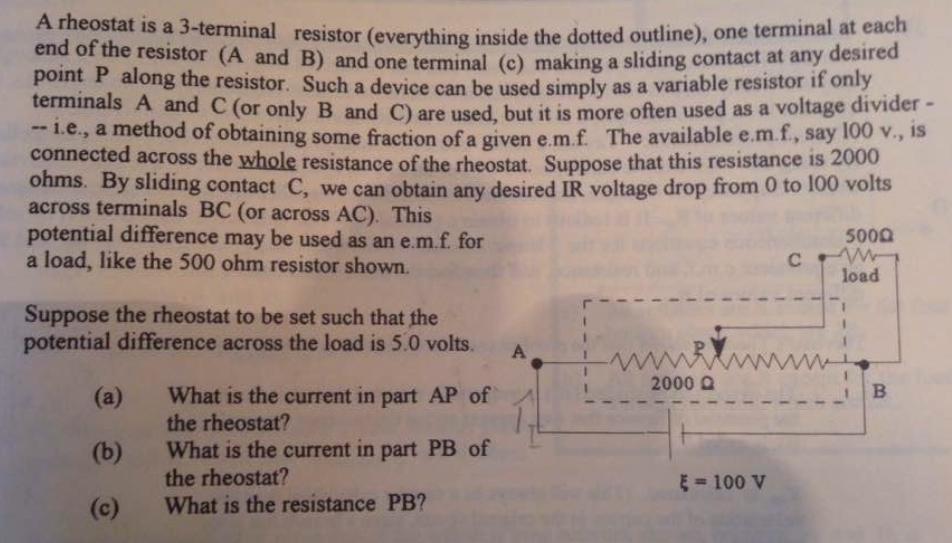Answered step by step
Verified Expert Solution
Question
1 Approved Answer
A rheostat is a 3-terminal resistor (everything inside the dotted outline), one terminal at each end of the resistor (A and B) and one

A rheostat is a 3-terminal resistor (everything inside the dotted outline), one terminal at each end of the resistor (A and B) and one terminal (c) making a sliding contact at any desired point P along the resistor. Such a device can be used simply as a variable resistor if only terminals A and C (or only B and C) are used, but it is more often used as a voltage divider - -- i.e., a method of obtaining some fraction of a given e.m.f. The available e.m.f., say 100 v., is connected across the whole resistance of the rheostat. Suppose that this resistance is 2000 ohms. By sliding contact C, we can obtain any desired IR voltage drop from 0 to 100 volts across terminals BC (or across AC). This potential difference may be used as an e.m.f. for a load, like the 500 ohm resistor shown. Suppose the rheostat to be set such that the potential difference across the load is 5.0 volts. (a) (b) (c) What is the current in part AP of the rheostat? What is the current in part PB of the rheostat? What is the resistance PB? wwww 5000 C load 2000 Q B = 100 V
Step by Step Solution
There are 3 Steps involved in it
Step: 1

Get Instant Access to Expert-Tailored Solutions
See step-by-step solutions with expert insights and AI powered tools for academic success
Step: 2

Step: 3

Ace Your Homework with AI
Get the answers you need in no time with our AI-driven, step-by-step assistance
Get Started


